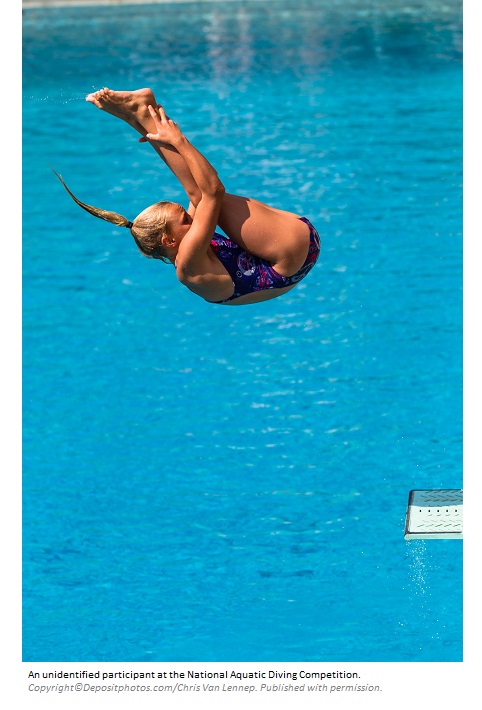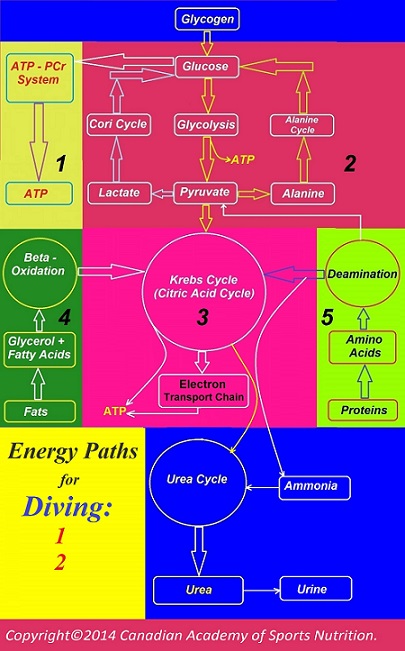Diving is an aquatic sport in which athletes jump into water from a springboard or platform. Being one of the most popular Olympic sports, diving events are held either as recreational activity or as competitive sport.

Diving Events: Men and Women |
3 m springboard 3 m springboard, synchronized 10 m platform 10 m platform, synchronized |
Diving Events: | |||
Energy Systems* | Anaerobic, ATP – CP | 98% | |
Anaerobic, Glycolysis | 2% | ||
Aerobic | 0% | ||
No | |||
Average Calories Burned per One Hour** | 180 – 210 | ||
Endurance Diet Required | No | ||
Risk of Muscle Breakdown (Rhabdomyolysis)*** | Low | ||
Risk of Sports Injuries | Low | ||
Benefits from Creatine**** | Maximum | ||
Fitness Demands | Agility | Yes | |
Endurance | + | ||
Explosive Power | Yes | ||
Speed | Yes | ||
*See “Energy Systems” under the section of “Sports Nutrition”.
**Your body weight and body metabolism are important elements affecting the average calories you burn during any physical activities. This is the average amount of calories burned by a person with a body weight of 155 Ibs (70 Kg) within one hour of this sport.
***See “Post – Exercise Rhabdomyolysis” under the section of “Athletic Disorders”.
****See “Creatine Monohydrate” under the section of “Sports – Performance Enhancers”.
For the “energy paths” of this sport, see the “energy map” below.


